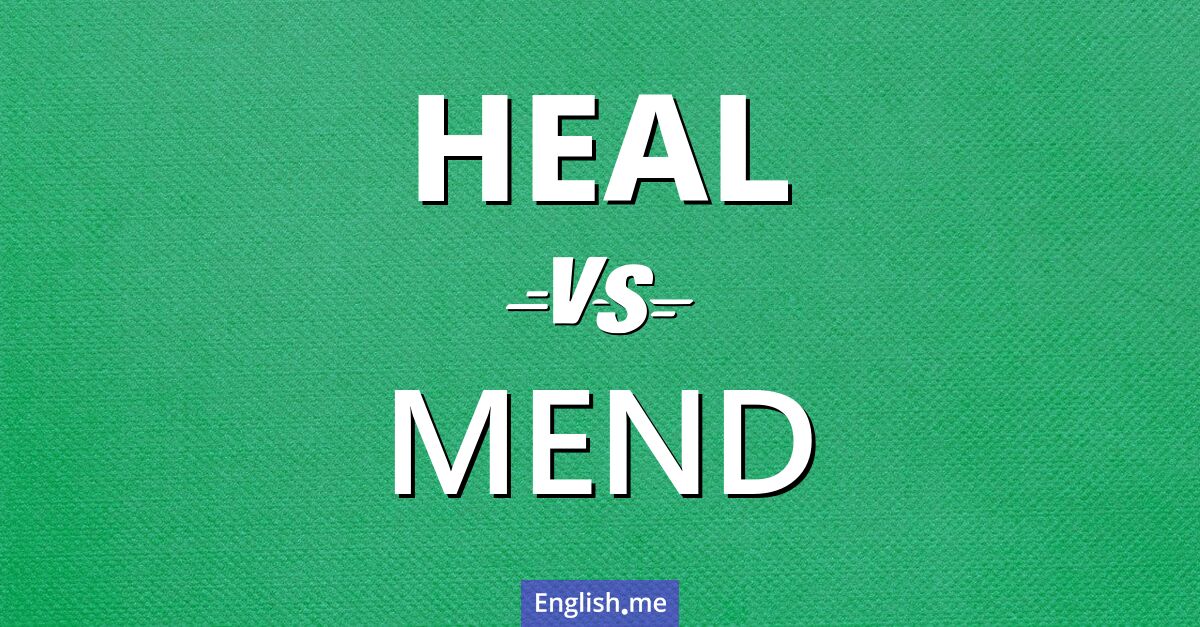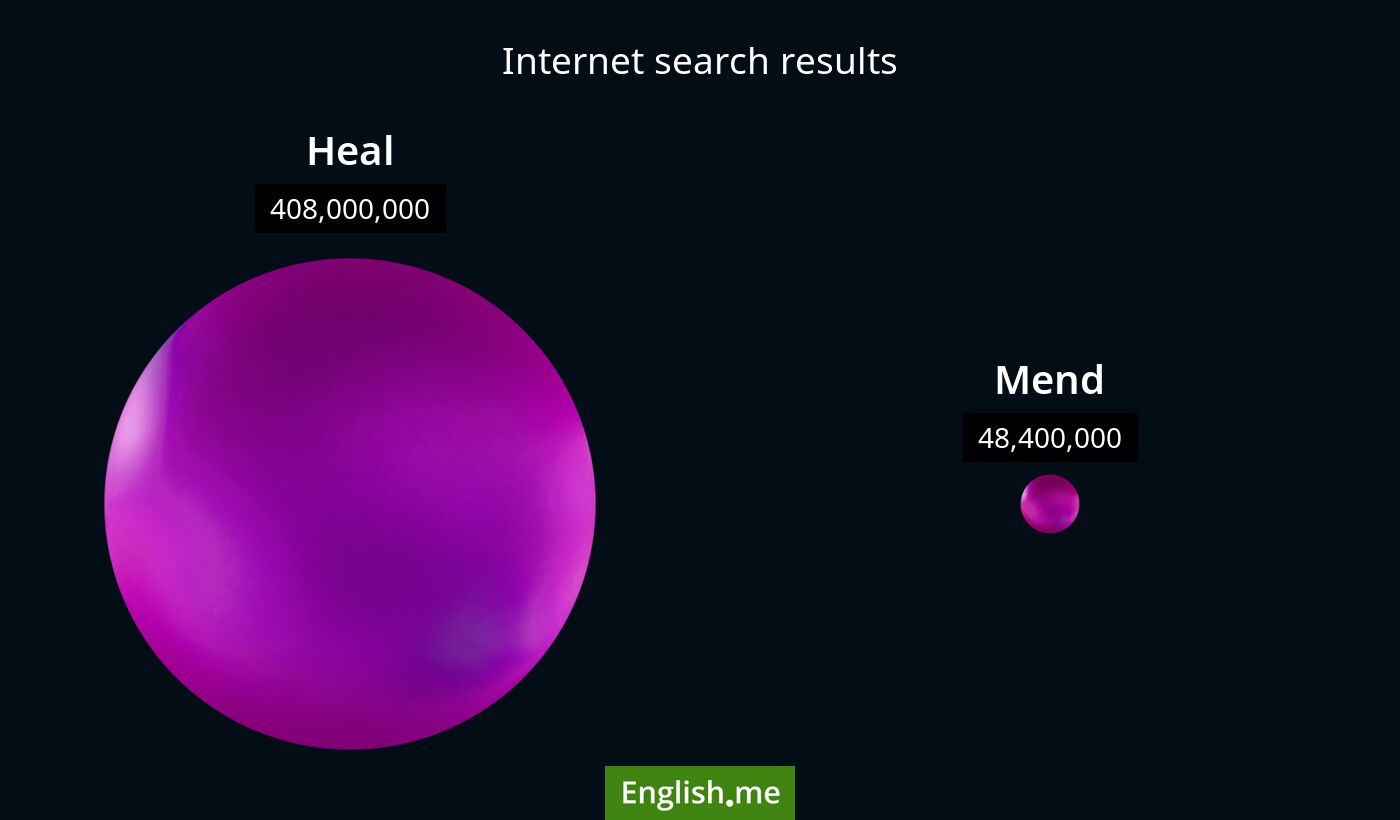"Heal" vs. "mend": where meaning overlaps and diverges
Reviewed and edited by  Lloyd Cooper 17/04/2025, 07:29
Lloyd Cooper 17/04/2025, 07:29
English.me team member

 What is similar?
What is similar?
Both "heal" and "mend" involve the process of making something damaged or broken whole again. They can refer to repairing physical damage or restoring well-being, and both can be used metaphorically to describe fixing emotional or relational issues.
 What is different?
What is different?
"Heal" typically relates to recovering health or well-being in living organisms, addressing physical wounds, illnesses, or emotional pain. "Mend" generally refers to repairing physical objects or materials that are broken or torn, such as clothing or equipment, but can also be used figuratively for improving situations or relationships.
 Which one is more common?
Which one is more common?

 Examples of usage
Examples of usage
Heal- The doctor expects the wound to heal in a few weeks.
- Time can help heal emotional pain.
- Her kind words helped heal the broken trust between them.
- She used thread and needle to mend the torn dress.
- The mechanic mended the broken engine quickly.
- They worked hard to mend their strained relationship.

 English
English español
español française
française italiano
italiano deutsche
deutsche 日本語
日本語 polski
polski česky
česky svenska
svenska Türkçe
Türkçe Nederlands
Nederlands